Dear Barbara,
It’s a wonderful flight over Europe -and going East is always a pleasure. I’m traveling to Ukraine for the third time: the first was in Odessa, the second was in Lviv. And now I’m heading towards Kyiv with a quirky airline.
But it’s less of an odd flight and more of a sentimental one. I’m sitting on a Boeing 737 of Ukraine International Airlines, and, as you know, I love Boeings: I find them more comfortable than the Airbus, and there’s something about the colors inside. The Boeings remind me of my first journeys. The blue leather seats emit a certain degree of warmth, the seats are spacious, and at times, I recall smoking during the flights in the late ’90s.
I look out of the window: scattered clouds and the sun straight to my face. Then the stewardess pops by. She is blonde, but this doesn’t say anything about her. She’s distant, rough, and somehow smiling. And then she asks:
“Your surname and name.”
“Uh?”
“Your surname and name. Now.” She’s only rough now.
I say it.
“Say it again.”
I repeat it.
“Good.” And then, she hands me over some food. She’s now smiling.
I have booked a premium economy seat, which I thought was what it always is in intra-European flights: a few centimeters more for my knees. But in Ukraine International Airlines, it also means food of Business Class standards in terms of portion: a salad, a main dish (chicken with rice), a dessert, bread and butter, wine, coffee. Plus, a pillow for your back. Impressive for a medium-haul flight.
But what I find even more impressive is that I still have her voice in my ears. “Name and surname. Now.” As if the flight on a Boeing doesn’t make me feel enough like a teenager, her stern voice brings me back to school. I’m flying over Ukraine, and I think: how the hell did twenty years go by? It’s rather obvious that I recall my Xennial habits -and that charitable sun out there makes me joyful to the verge of tears.
I only recover when I see Kyiv from above, listening to “The kids aren’t alright” by Offspring. It’s all about the ’90s in this flight, and I’m wondering what sort of melancholy struck me 30,000 feet above the ground. Is this really a flight or time-traveling?
Kyiv by night is a glorious theater
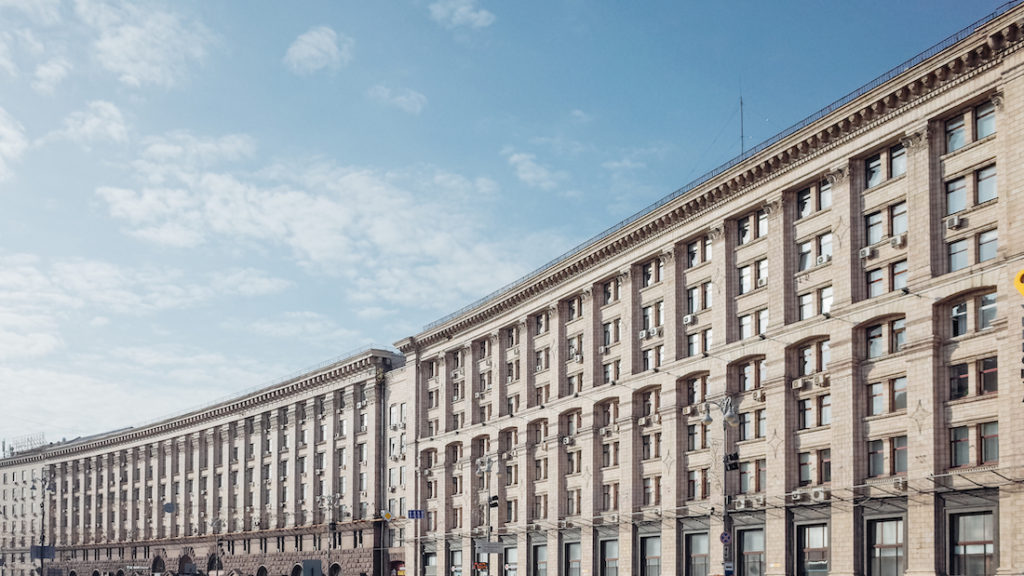
Broad pavements, steep side streets, flamboyant buildings, and fog sitting on the rooftops. Kyiv is dubbed the New Jerusalem due to its religious past, but in reality, it’s more accurate to call it the second Paris. It is hands down one of the most well-lit capitals in Europe. Under the yellow lights (that remind me of Palma), Kyiv breathes at a steady pace. The locals wear fancy clothes, and the fact that the weather in Kyiv is still pleasant brings loads of people to the streets.
The churches appear like spaceships ready to embark on golden intergalactic journeys. Saint Andrew’s church appears out of the darkness, and after a cluster of chain hotels, I see the impressive Saint Michael’s Golden-domed Monastery. In every step you take in Kyiv, you always long for more domes. I’m tired and sleepless, but I’m taking a long walk down Khreschatyk Street.
The Russians sealed the city’s past, but now Ukrainians work on Kyiv’s future. Lights and people, cars and marshrutkas, cafes, and silhouettes walking past windows: of all the cities I’ve seen, Kyiv by night is probably the most glorious theater.
It feels steep in Kyiv
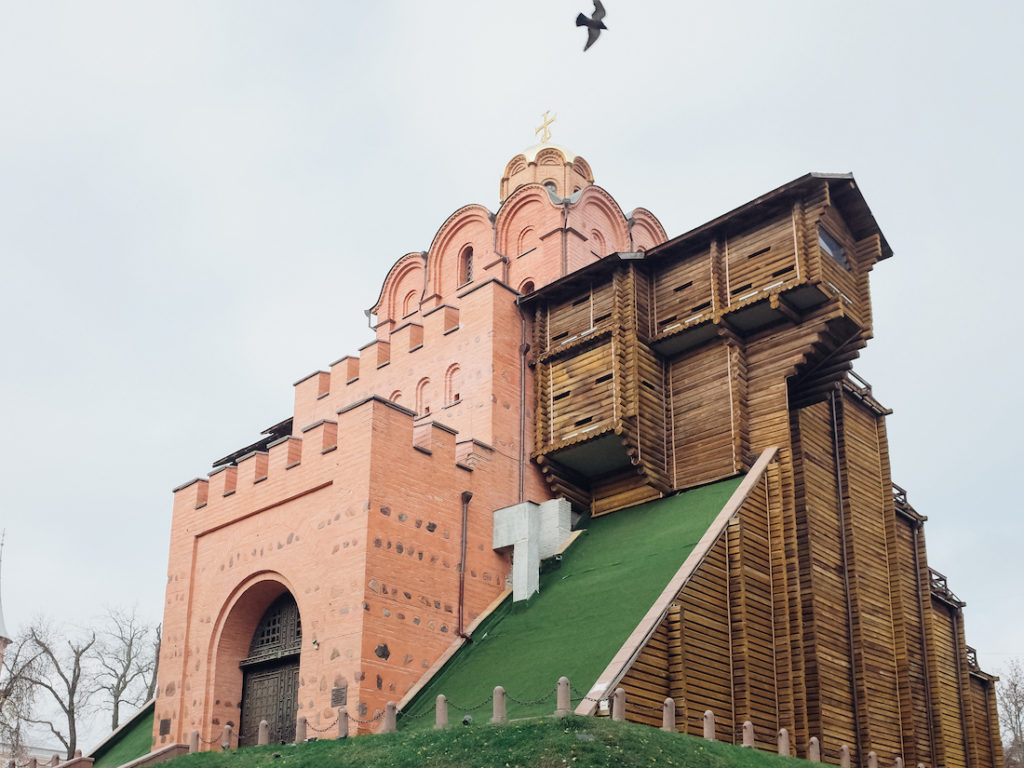
I stay close to Maidan Nezalezhnosti, the famous Independence Square, and I just walk down the street towards the Golden Gate of Kyiv. The so-called Zoloti Vorota was the main entrance in the city’s old fortification. Its name actually derives from the Golden Gate of Constantinople. I see people sitting on benches, and I’m surprised: it’s mid-November, and the weather in the Ukrainian capital is still mild.
Soon, I start walking towards Podil, an easy-going neighborhood in Kyiv. But here’s what I come to realize: I had a false impression of the city. For some odd reason, I imagined that Kyiv was flat. Well, apparently, it’s not. Kyiv is hilly, and on my way to Podil, I have to climb a steep road before moving down. I’m all sweaty, and I walk next to naked trees.
When I find myself in Podil, I think I have been here before. Low buildings, an alley full of cars, a Ferris wheel at Kontraktova Ploshcha square, and many pedestrians. It reminds me of a neighborhood in Minsk, but I can’t recall its name. Despite being close to the river Dnieper, Podil doesn’t see the water. Instead, the motorways around it cover the landscape.
But in Podil, it’s the first time I see cafes with outdoor seating, which makes me joyful: I still refuse to deal with the winter. Youngsters and university students sit outside and enjoy that afternoon in November. They know that this is a gift for this time of the year, and they should make the most out of it.
Uber in Kiev
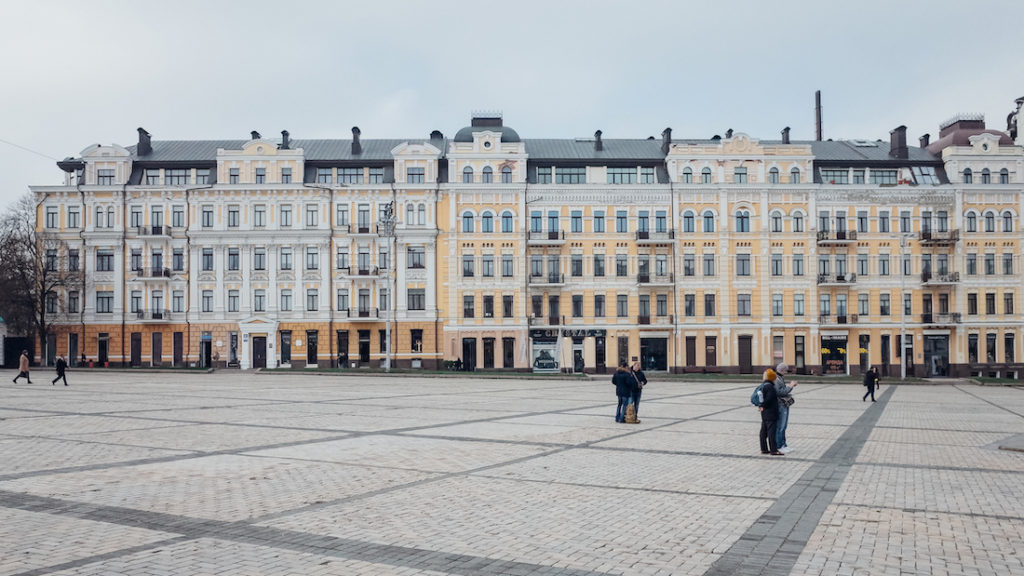
It’s not only that Kyiv is steep. It’s also insanely expanded. Now and then, I check Google maps, and I’m confident that I covered some distance. But in reality, it’s just a tiny distance on the map. Kyiv feels like a proper metropolis in terms of size. It has a vast urban metropolitan area that seems to be developing forever, and if you add on top the steep streets, you get a good impression of a city that it’s not always easy to explore.
Besides having an extensive public transport network, Kyiv also has Uber. When I realize how huge Kyiv feels, I start ordering Ubers for the longer distances. It’s not out of boredom: it’s mainly due to practical reasons. The days are short in November, and if you want to make the most out of the daylight, you have to move fast. The sun starts to hide behind the tall buildings of Kyiv shortly before 4 pm, so I try not to lose time.
I can’t recall how many Ubers I got in Kyiv -I guess ten or twelve. All the drivers were men between 25 and 35 years old. They drove relatively old cars but kept them in good condition apart from some light cigarette smell. None of them spoke English. The latter disappointed me: I thought of doing short interviews with my Uber drivers, but unfortunately, the language barrier couldn’t be omitted. The rides were safe, though, and all of them cheap; Uber in Kyiv didn’t cost me more than 3 euros for a ride within the city.
The deepest metro station in the world: Arsenalna

I’ve heard of the Kyiv Smart Card -a plastic rechargeable card for public transport- but I also have a thing for old stuff. Remember: this journey made me nostalgic already from my flight to Kyiv. How could I possibly deny an extra dose of nostalgia while walking in the city?
Instead of buying the Kyiv Smart Card, I queue for the plastic token. That’s an old plastic coin of sorts that serves as your ticket. I think that my first ride should be Arsenalna, the deepest metro station in the world (almost twice as deep as London’s). The queue is long, but it moves pretty fast.
Halfway in the line, I see the lady selling the plastic tokens: her hands move with the speed of an experienced card player. Each token costs 8 hryvnias (a couple of cents), and I think of buying six. I pantomime number six, and then I take the tokens in my hands…almost.
One of them falls off my hand, but the queue is impatient. People approach the lady with the tokens rapidly, and suddenly, my face is among shoes. I keep searching for the light blue token with no success. Passengers are moving like robots while I’m searching foolishly for my lost token. Is this the opening scene of Jacques Tati’s Playtime? Soon, I quit: I have to catch the train.
The journey down to the platform lasts more than the ride with the metro. At first, I take a long escalator down, and after two minutes, I think that the deepest metro station in the world is an exaggeration. I walk a couple of meters, expecting to find the platform, but then I see an equally long -if not longer- escalator.
In total, it takes four to five minutes to reach the platforms of Arsenalna station. I observe the station, and my thoughts make me suffocate a bit: I’m 105,5 meters beneath the surface. What if something happens? I think of earthquakes and wars, and every pessimistic thought crosses my mind.
But, of course, nothing happens. The ride to the next station of Kyiv’s red line is smooth, and the train is fast.
The Motherland monument in Kyiv
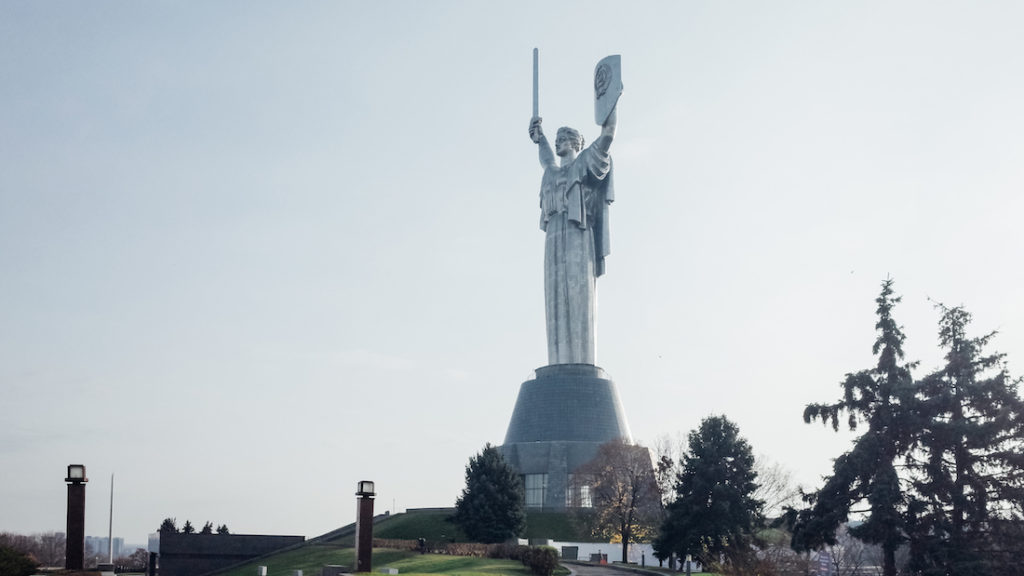
A dog is barking at me, surrounded by old, morbid tanks. At first, I don’t see it, but then it comes running towards me. I’m pointing my small Ricoh towards the Motherland Monument, a gargantuan statue that it’s 102 meters tall and weighs more than 560 tonnes together with its base.
The dog doesn’t seem to care about it, nor about the Museum of the Great Patriotic War next to the monument, but its owner saves me. It’s a young woman who doesn’t seem in a good mood. “Are you American?” she asks. I say I’m from Greece. “Ah, Greece,” she replies, “Kalimera, Kalispera, Parakalo” -and away she goes.
I can’t help thinking of the Courage Statue in Brest. The soldier of Brest seemed proud but exhausted, but the Motherland Statue in Kyiv looks victorious. Rumour has it that it wasn’t always the plan to have the Motherland Monument there. In the 1950s, the officials thought of creating twin statues of Lenin and Stalin, each one exceeding 200 meters in height. However, the plan didn’t flourish, and they decided that a War Memorial was more compatible with the place.
In April 2015, the parliament of Ukraine decided that Soviet and Communist symbols -as well as street names and monuments- would not be allowed anymore. However, World War II monuments are not part of these laws; therefore, the controversial statue still stands in its place, overlooking the tall buildings on the opposite side. Motherland is presented as a female figure, holding a sword in one hand and a shield in the other.
Is it Kyiv or Kiev?
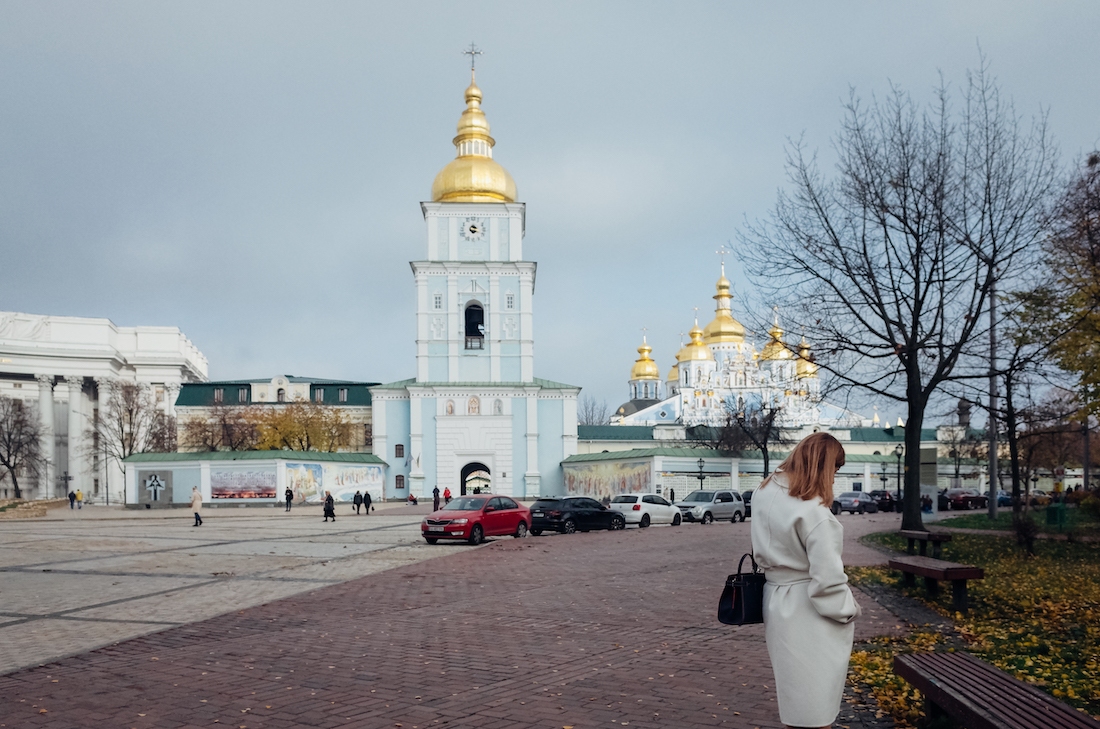
Talking about the Motherland Monument and, subsequently, about national pride, there’s a question in my mind during my days in Kyiv. Should I write Kyiv or Kiev?
I grew up calling it Kiev; to me, it was always obvious that this was the correct spelling. However, the direct transliteration of the Ukrainian name into English is Kyiv (Київ). That’s how the locals call their city anyway. On the other hand, the more widespread spelling, Kiev, derives from the Russian version of the name (Киев). Watching matches of Dynamo Kyiv on the TV when they played against Greek teams didn’t help that much. Half of the time it was written Dynamo Kyiv, the other half was Dynamo Kiev.
I decided to go with the locals, and that’s why I am spelling it Kyiv. The locals have the right to call their city the way they want, and the symbolism of words is much stronger than we think. It is, actually, an act of liberation. People shape Kyiv’s future, and the local name seals it.
Visiting the Chernobyl National Museum in Kyiv
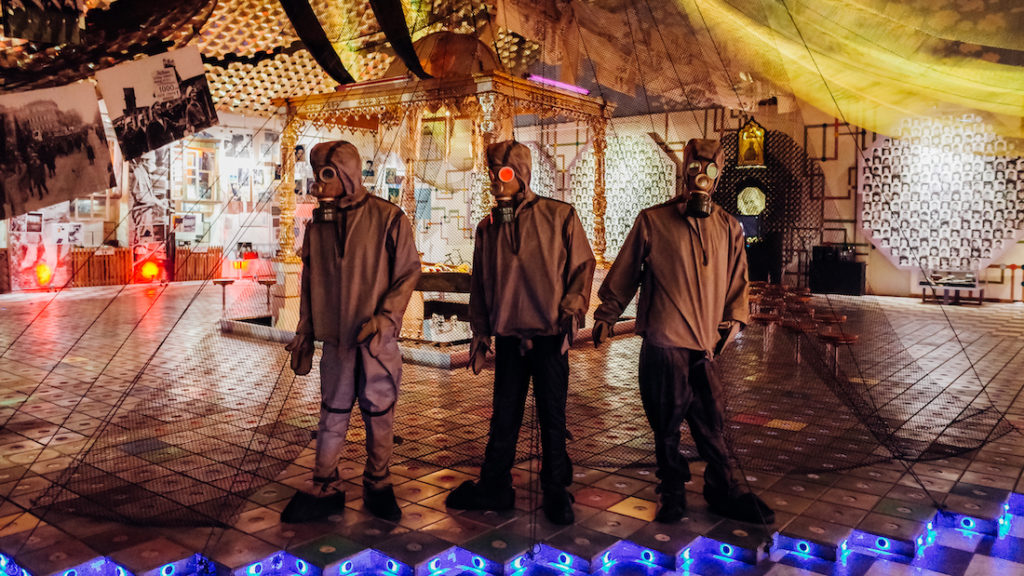
I won’t lie: last year I thought of visiting Chernobyl, of taking one of these tours towards the nuclear factory. But I didn’t do it back then, and this year I’m not tempted at all. Apart from the security issues (they say it’s safe, but I doubt it), the thing is that after the homonymous TV show, Chernobyl has become too mainstream. That’s not bad per se, but having to cope with loads of selfie-takers in a place where one of the worst accidents happened, well, I’ll pass. I’d consider visiting Chernobyl out of interest, but I’m not willing to be among the people commercializing death.
What I thought of doing in Kyiv instead was visiting the Chernobyl National Museum. The building in the Podil area seems to condense a good part of what happened in Chernobyl back in 1986. This is not your typical museum, though: it reminds me more of a sentimental patchwork, which includes a number of installations together with objects from the past. Official letters, photos, videos, and loads of information will give you an overview of the nuclear accident in Chernobyl.
An obligatory stop at Osokorky Metro Station

After the initial shock due to its depth, the metro of Kyiv starts to become a daily habit. I no longer have morbid thoughts as the fast -almost nervous- escalators bring me a hundred meters beneath the surface. On the contrary, I find myself longing for the metro rides every day. I’m tempted to buy the Kyiv Smart Card, but I prefer the tokens.
The main reason is that the tokens will stop being used by the end of October. Well, it’s mid-November now, and they are still in use. They will probably carry on for a few more days. But most importantly, Kyiv’s metro tokens are great souvenirs.
I stop in metro stations, I walk, and I take photos. Sometimes I emerge on the surface to see what each area looks like. And then, one morning, I stop at the Osokorky Metro Station. It’s just a couple of months since the Osokorky Metro Station received a total makeover. A bunch of international artists painted the walls of the station. The themes mainly deal with the contemporary history of Ukraine, which seems to be a boiling topic in the country.
For me, the most impressive of them all is “Autonomy” by the Costarican Mata Ruda. It depicts a young Tatar woman in traditional clothes. Her expression is awe-inspiring. Each of the artists, though, contributed to the transformation of the Osokorky metro station; therefore, I feel like writing down their names. The eight artists, as well as the titles of their paintings, are:
“Autonomy” by Mata Ruda (Costa Rica)
“Universal Language” by Apollo Tores (Brazil)
“Motherland” by Kraser (Spain)
“United” by Issam Rezgui (Switzerland)
“Samotkana” by Alexander Britsev (Ukraine)
“Avdeyevka” by Matthew Down (Belgium)
“Unfinished” by BkFoxx (USA)
“Knowledge is a Treasure” by Spear (Belgium)
As for the project’s name, that’s “More than Us.” I spend half an hour in the station, and I try in vain to ask the locals how they feel about the murals. Ah, that language barrier…
A proper goodbye to Kyiv
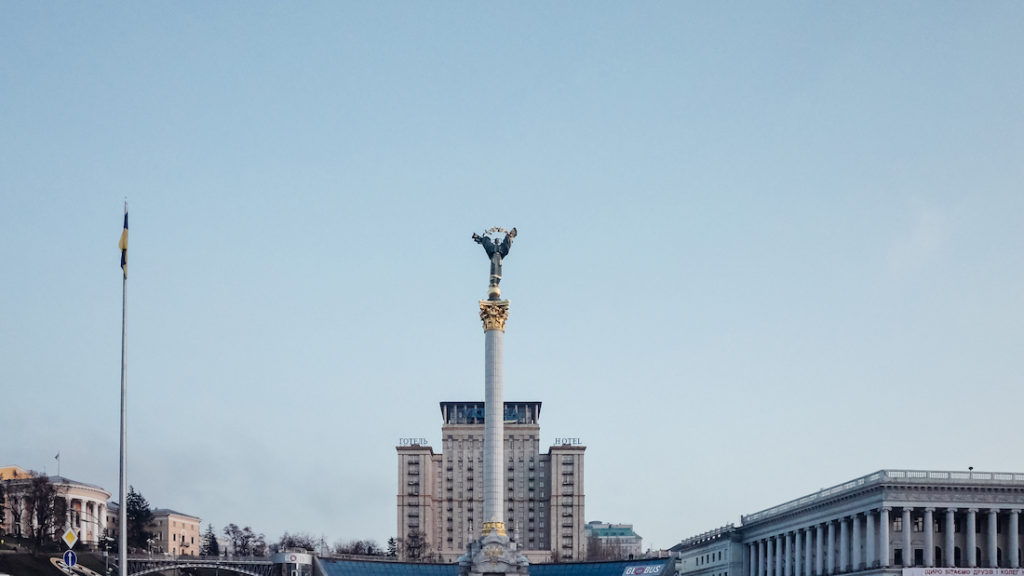
On my last evening in Kyiv, the weather seems to change significantly. There’s a cold wind rolling down the hill, and in every corner, you can feel a strong whip in your face. The last yellow leaves have fallen from the trees, and when the wind gets stronger, you can see small yellow swirls dancing around.
Usually, on the last evening of every journey, I’m wondering how I should spend it. Should I visit a bar? Or maybe a nice restaurant? Shall I better walk around the city? I’ve covered most of the things to do in Kyiv, I’ve seen most of the attractions. That said, I prefer to find a nice place to have dinner.
I remember that I’ve found such a place the second day. It’s a tiny restaurant located in a semi-basement. It doesn’t look that special from the outside, and I bet that the interior is not that special either. It’s called Bud’mo.
Indeed, the interior is not fancy. It’s a small place with just a couple of tables. But there are two ladies, chubby and jolly, that look ready to spoil you. I order Borscht for the starter and for the main dish dumplings (Varenyky in Ukrainian). They are both delicious -, and the wine they suggest to me is divine. I order one more glass of wine, and I ask for dessert: pancakes with cheese and sour cream. Excellent.
I look out of the window, and all I see is a slice of sky. The legs of passersby interrupt the view, but it doesn’t matter that much. I can feel the warmth of the place, and that’s more than enough.
Then, I check Foursquare, and Bud’mo has a rating of 5,7. Wait, what? I’m trying to understand what’s wrong. Bud’mo is a charming little place with a tired interior and a big heart. I had a fantastic dinner here, among a few locals and two joyous ladies running it. I have no clue why people in such apps rate highly only the posh or fancy restaurants.
There’s apparently a failure in the understanding of other qualities. Hiring the best interior designers and the best chefs will often give you impressive but faceless restaurants. But in Bud’mo, and in places like that, you come for their warmth, for their charm. After all, you decide to eat here because these are time-capsules proving that there was a world before the digital age. Honestly, I’d eat every day in Bud’mo, and I’d skip the fanciest restaurants of Kyiv.
I pay, and I -probably- leave the most generous tip I ever left at a restaurant. It’s not always about the food. Often, it’s about the good old days -if such days ever existed. But what I know is that Kyiv has existed for a long, long time, and it’ll be a pity to abolish these elements of its past. I walk towards the hotel, and my scarf is not protecting me. Winter is coming. Kyiv knows how to handle a long winter. Me, on the other hand, not so much.
At least I’ll see you soon.
George
More about Kyiv (Kiev): Ukraine International Airlines Review, Kyiv city guide, My Kyiv Polaroids
Buy the camera I use | Book your hotel in Kyiv
Pin it for later
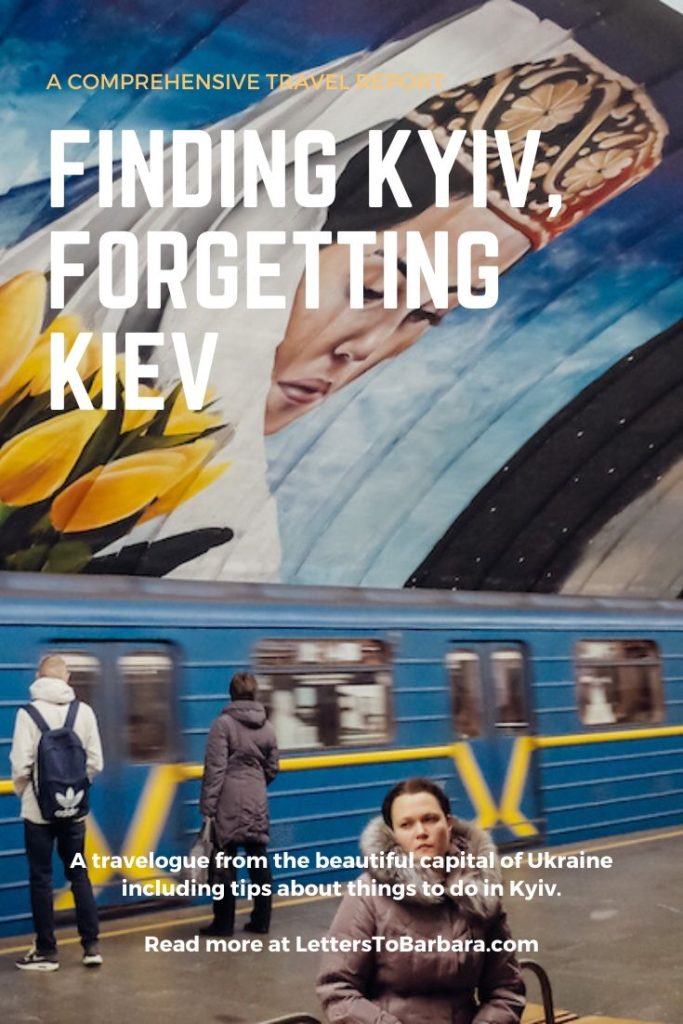
Sharing is caring. Share Finding Kyiv, forgetting Kiev with your friends.
Last Updated on February 26, 2022 by George Pavlopoulos


